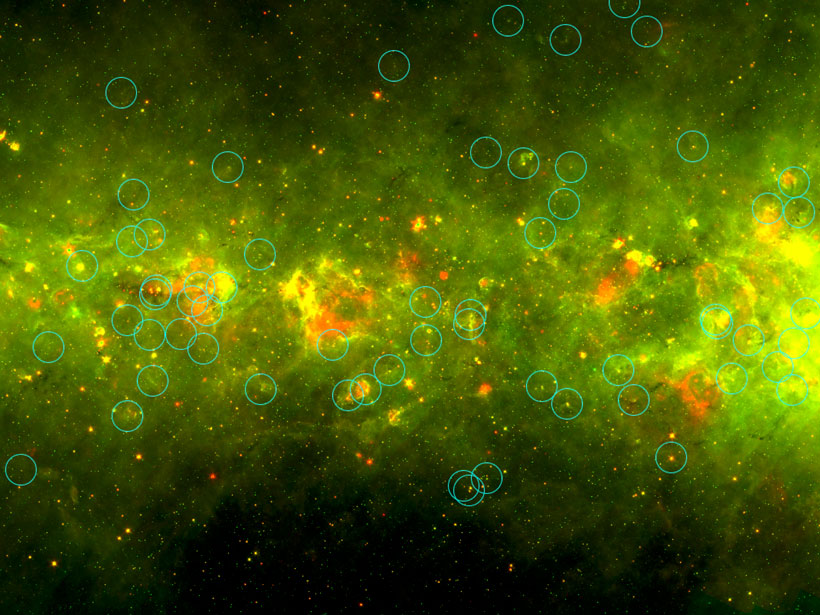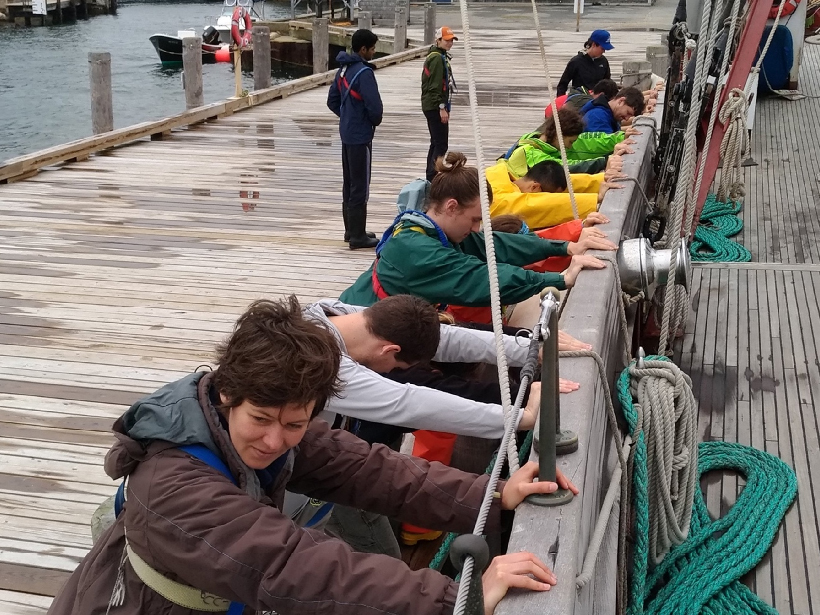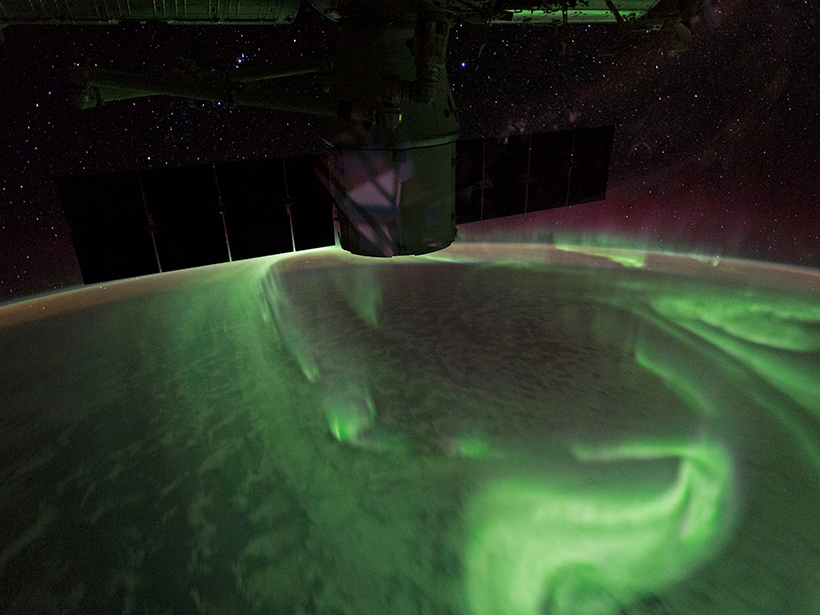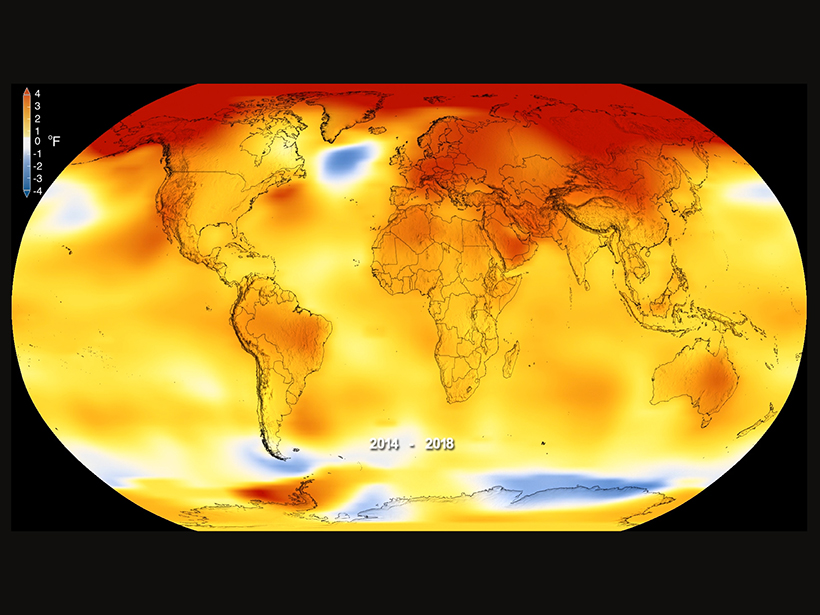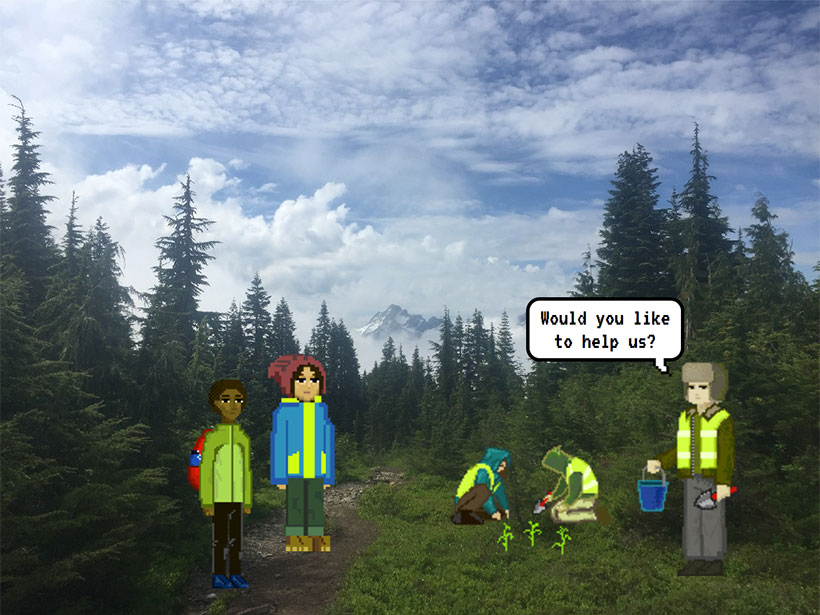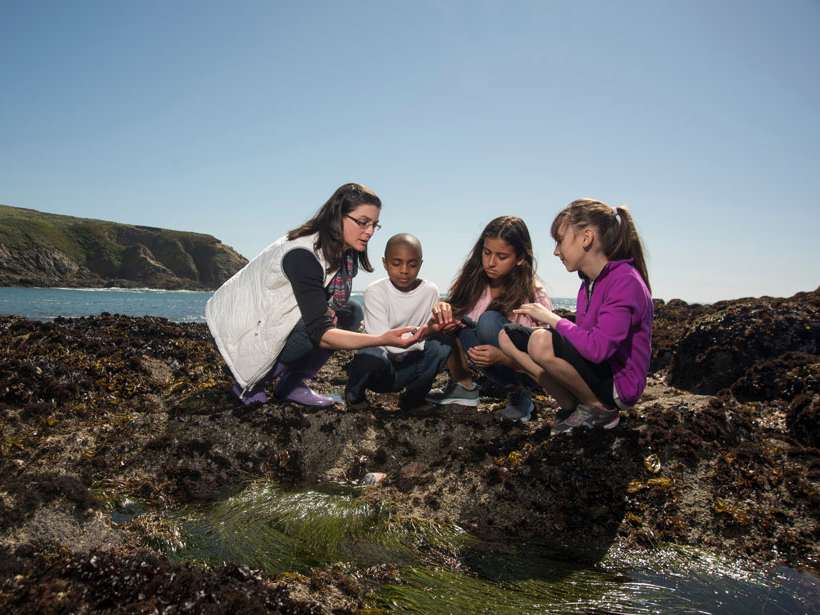The online community of the Milky Way Project citizen scientists helped scientists identify compact star-forming regions now known as yellowballs.
lists!
Eight Ways to Support Women in Science
Attracting and retaining women in the sciences require action on all fronts: stopping outright harassment, changing institutional cultures, and ensuring that women are included, recognized, and heard.
Bringing Clarity to What Drives Auroras
A new classification scheme helps researchers distinguish what accelerates the electrons that create auroras.
All About Bennu: A Rubble Pile with a Lot of Surprises
Asteroid Bennu has been under close scrutiny since December. Here are six key results from the first few months of data from OSIRIS-REx.
2018 Is the Fourth-Hottest Year on Record
The climate is continuing to heat up, say NASA and NOAA, and 2018 is no exception.
New Horizons Sends First Looks of 2014 MU69
Explore 10 things scientists have already learned about the most distant object visited by a spacecraft from Earth.
Captivating Geoscience Videos of 2018
As the year comes to a close, look back on interesting Earth and planetary science phenomena captured on camera.
Geoscience Games to Liven Up Your Holiday Season
Learn geoscience and have fun while doing it. For 1+ players. Good for all ages.
Lessons Learned from Kīlauea Eruption’s Media Frenzy
The Kīlauea eruption earlier this year unleashed a media bonanza. Here are nine tips about how to debunk geohazard misinformation in real time from a scientist frequently tapped for expert comments.
Universities Can Lead the Way Supporting Engaged Geoscientists
Geoscientists want to engage communities and policy makers. Colleges and universities can help by embracing five core capacities.

